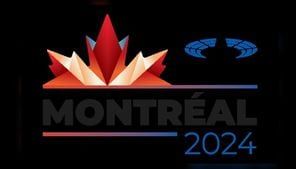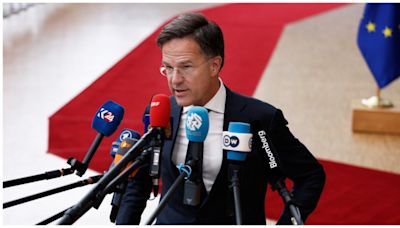Search results
3 days ago · NATO is a political and military alliance of countries from Europe and North America. Its members are committed to protecting each other from any threat. What is NATO?
- Member Countries
At present, NATO has 32 member countries. These countries,...
- NATO on The Map
We would like to show you a description here but the site...
- What is NATO
An introduction to NATO that provides basic information on...
- Careers at NATO
NATO strives to recruit well-qualified, motivated civilians...
- Newsroom
NATO Press Office – Who We Are. The NATO Press Office is the...
- Strategic Concept
We would like to show you a description here but the site...
- Work With Us
NATO offers six-month internships at NATO Headquarters in...
- News
NATO and Moldova continue to strengthen cooperation on...
- A short history of NATO
- North Atlantic Treaty
- NATO's response to Russia's invasion of Ukraine
- Partnerships: projecting stability through cooperation
- Deterrence and defence
- NATO’s nuclear deterrence policy and forces
- NATO’s purpose
- Founding treaty
- Countering hybrid threats
- The NATO phonetic alphabet – Alfa, Bravo, Charlie...
- Member Countries
The North Atlantic Treaty Organization (NATO / ˈ n eɪ t oʊ / NAY-toh; French: Organisation du traité de l'Atlantique nord, OTAN), also called the North Atlantic Alliance, is an intergovernmental military alliance of 32 member states—30 European and 2 North American.
NATO is a political and military alliance of 32 countries from Europe and North America. It guarantees the freedom and security of its members, cooperates with partners and responds to threats and crises.
- 1949 - The 12 Founding Members
- 1952 - The Accession of Greece and Türkiye
- 1955 - The Accession of Germany
- 1982 - The Accession of Spain
- 1999 - The First Wave of Post-Cold War Enlargement
- 2004 - The Second Wave of Post-Cold War Enlargement
- 2009 - The Accession of Albania and Croatia
- 2017 - The Accession of Montenegro
- 2020 - The Accession of North Macedonia
- 2023 – The Accession of Finland
- GeneratedCaptionsTabForHeroSec
On 4 April 1949, the Foreign Ministers from 12 countries signed the North Atlantic Treaty(also known as the Washington Treaty) at the Departmental Auditorium in Washington, D.C. NATO's founding member countries were: Belgium, Canada, Denmark, France, Iceland, Italy, Luxembourg, the Netherlands, Norway, Portugal, the United Kingdom and the United St...
Three years after the signing of the Washington Treaty, on 18 February 1952, Greece and Türkiye joined NATO. This enabled NATO to reinforce its southern flank. At a time when there was a fear of communist expansion throughout Europe and other parts of the world (for example, Soviet support of the North Korean invasion of South Korea in 1950), exten...
Germany became a NATO member on 6 May 1955. This was the result of several years of deliberations among western leaders and Germany, whose population opposed any form of rearmament. Following the end of the Second World War, finding ways of integrating the Federal Republic of Germany into western European defence structures was a priority. The Fede...
Spain joined the Alliance on 30 May 1982 despite considerable public opposition. The end of Franco's dictatorship in 1975, the military coup in 1981 and the rise of the Socialist Party (PSOE, the leading opposition party which was initially against NATO accession), made for a difficult social and political context, both nationally and international...
The fall of the Berlin Wall and the dissolution of the Warsaw Pact after the end of the Cold War opened up the possibility of further NATO enlargement. Some of the new democracies of Central and Eastern Europe were eager to become integrated into Euro-Atlantic institutions. In 1995, the Alliance carried out and published the results of a Study on N...
Bulgaria, Estonia, Latvia, Lithuania, Romania, Slovakia and Slovenia were invited to begin accession talks at the Alliance's Prague Summit in 2002. On 29 March 2004, they officially became members of the Alliance, making this the largest wave of enlargement in NATO history. All seven countries had participated in the MAP before acceding to NATO.
When they were partners, Albania and Croatia worked with NATO in a wide range of areas, with particular emphasis on defence and security sector reform, as well as support for wider democratic and institutional reform. Albania had participated in the MAP since its inception in 1999 and Croatia joined in 2002. In July 2008, they both signed Accession...
Shortly after regaining its independence in June 2006, Montenegro joined the Partnership for Peace in December of the same year and the Membership Action Plan three years later. It actively supported the NATO-led operation in Afghanistan from 2010 and provided support to the follow-on mission. Developing the interoperability of its forces and pursu...
North Macedonia became independent in 1991 and joined NATO's Partnership for Peace (PfP) programme in 1995 and the Membership Action Plan in 1999. For a short period between 2001 and 2003 and on the request of Skopje, NATO conducted three peace-support operations in the country. Before becoming a member of the Alliance, North Macedonia cooperated w...
NATO's cooperation with Finland began when it joined the Partnership for Peace (PfP) programme in 1994. Over the subsequent decades, Finland became one of NATO's most active partners and a valued contributor to the Alliance's activities, including NATO-led operations and missions in the Balkans, Afghanistan and Iraq. Finnish cooperation with NATO w...
Learn about the 32 countries that are part of NATO, the North Atlantic Treaty Organization, and how they joined the Alliance since 1949. Find out how each country contributes to the political and security cooperation of NATO and what makes their membership flexible and diverse.
2 days ago · The North Atlantic Treaty Organization (NATO) is a military alliance originally established in 1949 to create a counterweight to Soviet armies stationed in central and eastern Europe after World War II. When the Cold War ended, NATO was reconceived as a “cooperative-security” organization.
- David G. Haglund
- NATO is an acronym for North Atlantic Treaty Organization.
- Currently 31 countries are members of NATO.
- The current member states of NATO are Albania, Belgium, Bulgaria, Canada, Croatia, the Czech Republic, Denmark, Estonia, Finland, France, Germany,...
- Finland is the newest member of NATO; it joined the alliance in 2023. In May 2022 Sweden announced its intention to join NATO in response to Russia...
NATO (North Atlantic Treaty Organization) is an international military alliance consisting of 32 member states from Europe and North America. It was established at the signing of the North Atlantic Treaty on 4 April 1949.
Apr 23, 2024 · Nato - the North Atlantic Treaty Organization - was formed in 1949 by 12 countries, including the US, UK, Canada and France. Its aim was to block expansion by the Soviet Union - a group of ...
People also ask
What is NATO's military organization?
How many countries are in NATO?
Who decides if a country joins NATO?
Why should we join NATO?
What is the NATO Parliamentary Assembly?
What does NATO stand for?





